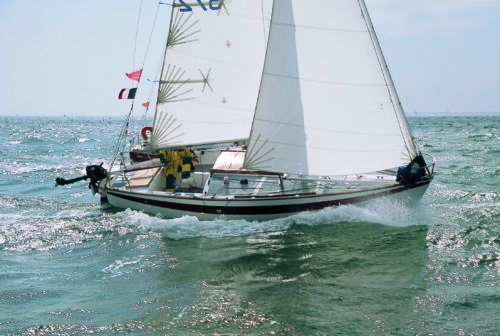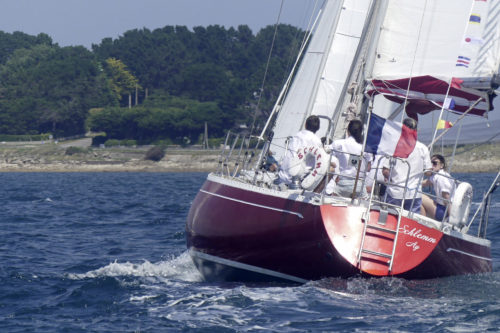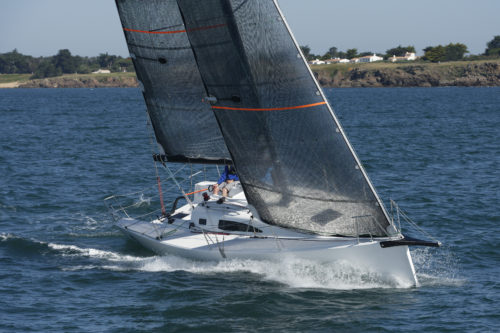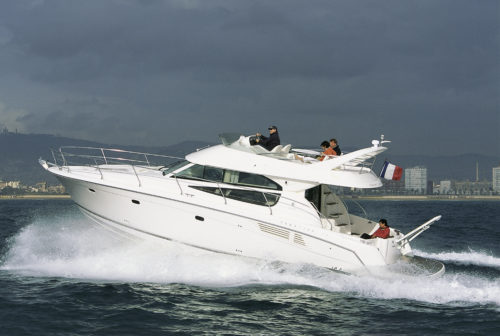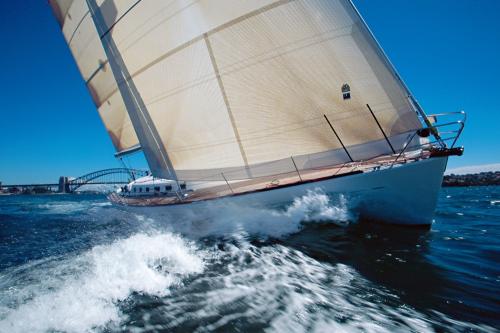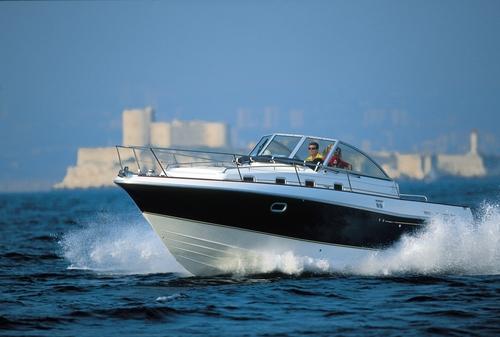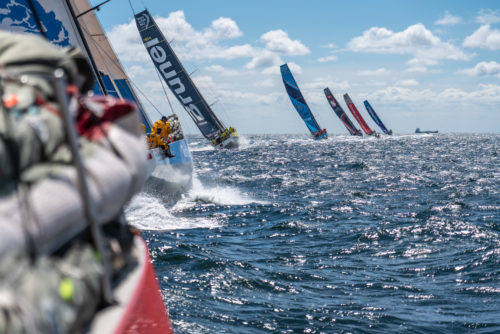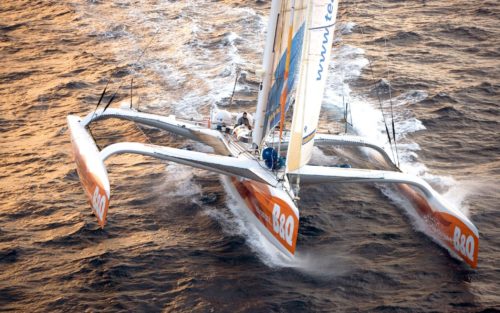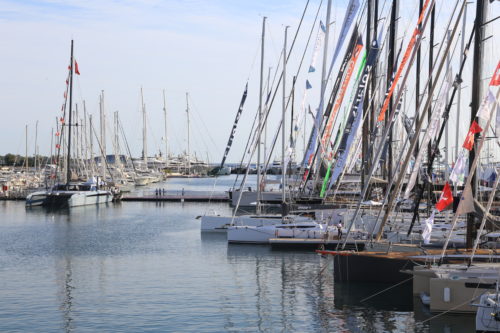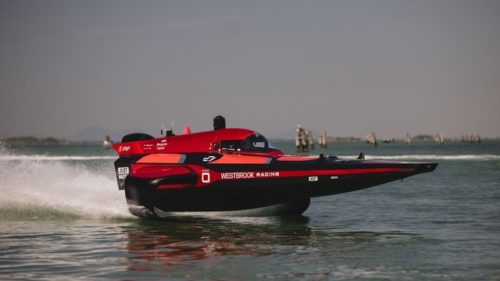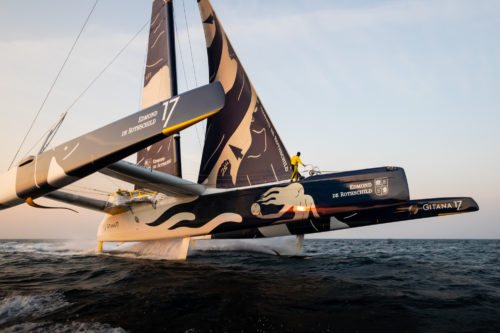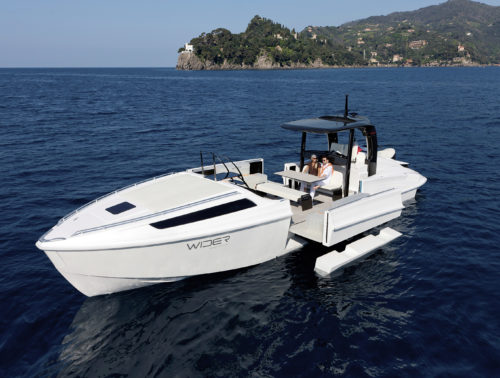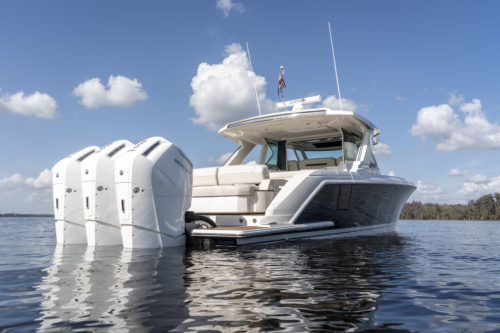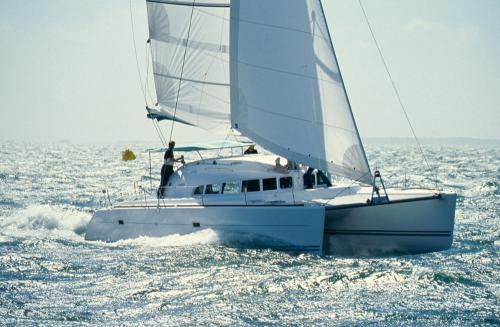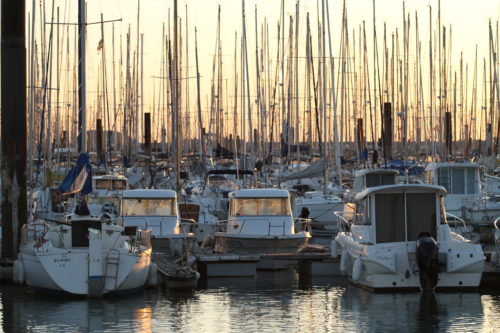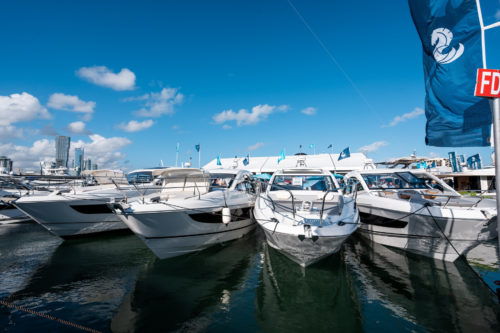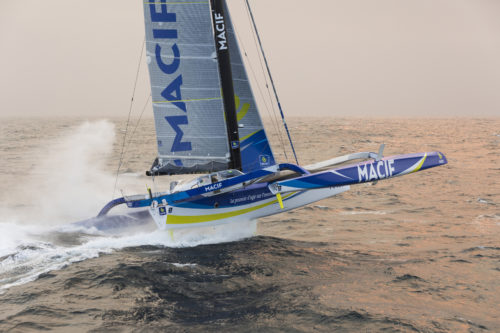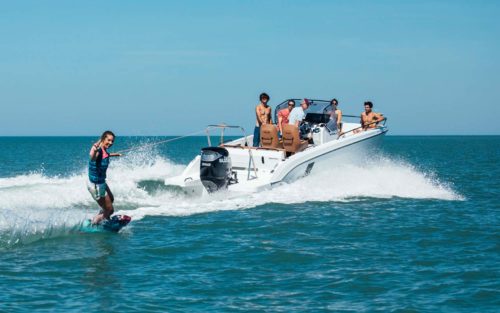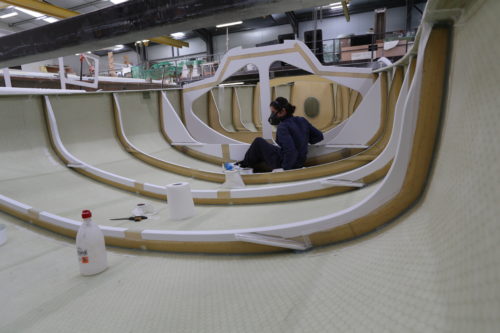The story of plywood sailboats
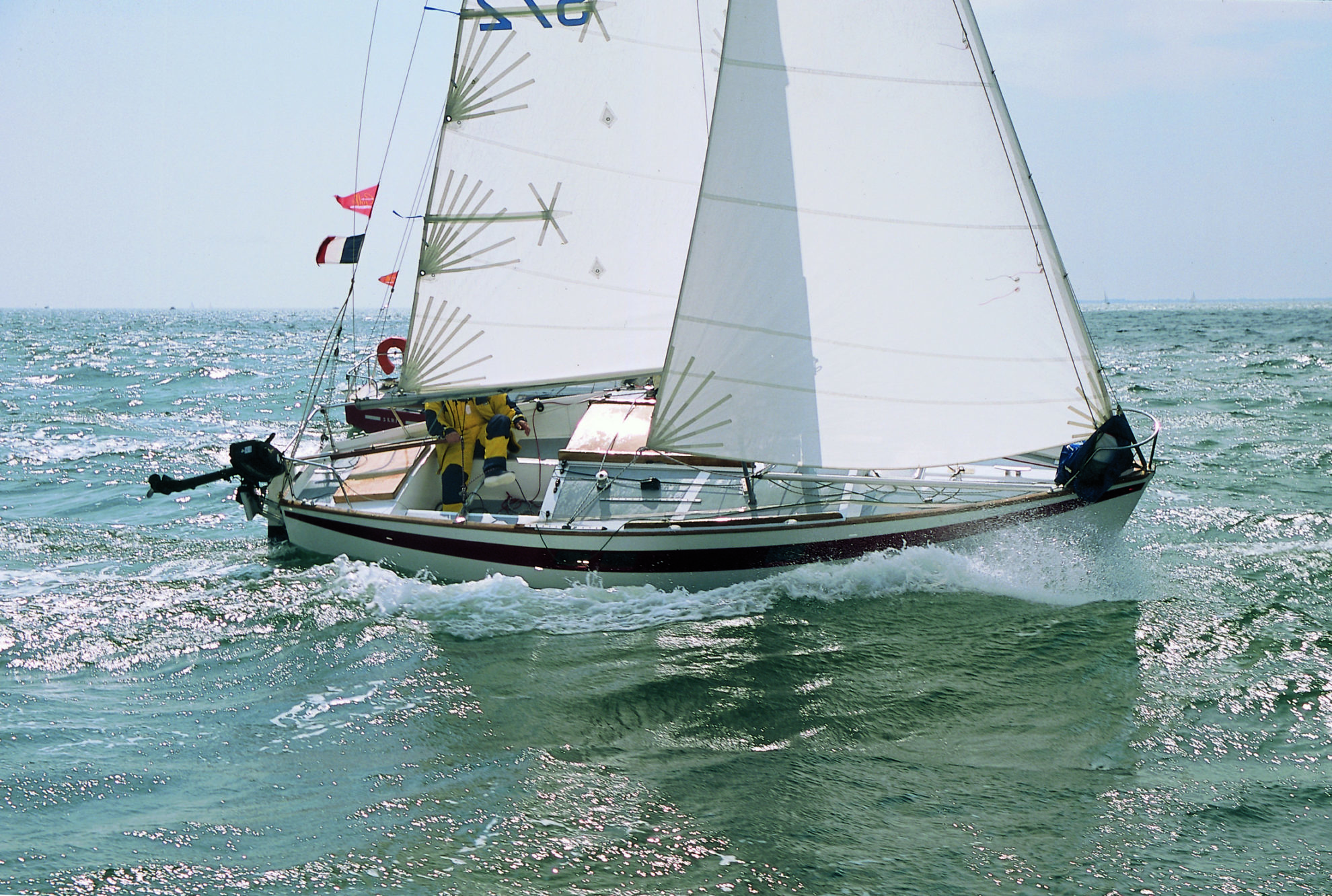
But let’s rewind a bit and go back to the origins of plywood, a material that emerged well before the first Corsaire and other Muscadet models… This method of gluing cross-laminated veneers, invented in 1884, was industrialized as early as 1914, initially for use in the construction industry. At that stage, its mechanical properties were not sufficient to be used for building boats. It was actually the development of new adhesives, simultaneously in England and Japan during the war, that gave rise to modern plywood. The scarcity of aluminum forced the military industries to switch back to wood for building aircraft, like the British Mosquito, with its balsa-core sandwich panels, and high-speed boats… made with plywood. These boats, designed to rapidly rescue RAF pilots downed in the English Channel, were powered by two Rolls-Royce Merlin engines – the same engines featured on the legendary Spitfire fighter plane. Their plywood hulls allowed them to cross minefields safely, and they were robust enough to carry and operate a 20mm cannon. A brilliant concept, credited to the architect Uffa Fox, the man behind the Flying Fifteen and many other racing keelboats. Jean-Jacques Herbulot was a close friend of Uffa Fox, for whom he once made a Flying Fifteen spinnaker in the Duke of Edinburgh’s colors, according to a story later shared by his daughter Florence, and he took note of the qualities of Fox’s military plywood launches. All that was left was to adapt the idea to a more peaceful pursuit: sailing! And with it, a stroke of genius: designing the hull lengths to match the dimensions of standard plywood panels at the time to optimize costs…

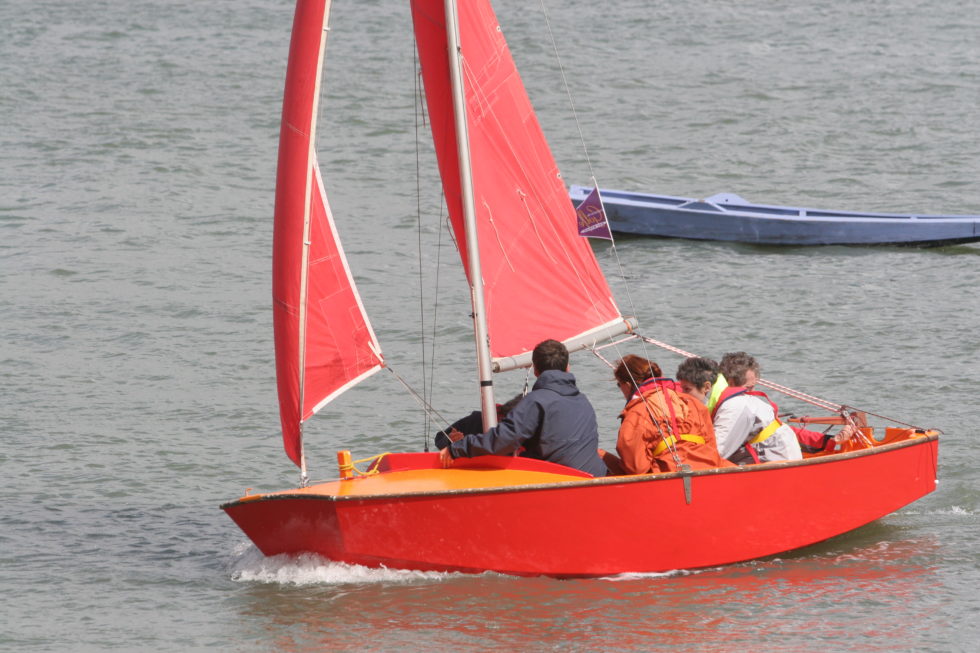
The famous Vaurien was born. Unveiled on the banks of the Seine at the 1952 Paris Boat Show, it is offered for 6,000 francs, just a quarter of the price of the 9m Sharpie, the cheapest dinghy of the time. Two years later, there will be 220 on the water, rising to 15,000 by 1965… This incredible success will be repeated with the first small liveaboard cruisers made with plywood, the Corsaire in 1954, followed by the Muscadet in 1962. Long before the widespread adoption of polyester and the industrialization of yards, these plywood boats will take a whole generation of vacationers onto the water, benefiting from the booming economy and discovering the sea. Thanks to Philippe Vianney and Les Glénans, sailing opens up to more than just specialists. Thanks to Jean-Jacques Herbulot, then Philippe Harlé, it is no longer just for the wealthy. “Reinventing everything around solid foundations” – this was the plan announced by Philippe Harlé in the introduction to the Glénans Manual of Sailing – the “Little Red Book” of popular sailing – in 1960. One thing is clear: this is a generation of architects and educators, often from outside the traditional yachting establishment, making a clean break with the past. And 50 years later, their boats are still sailing. Even better, they remain true to their original mission of being boats designed for everyday people, and there is always an enthusiast ready to fall in love with an old plywood hull and restore it in their garage. And this is another advantage of plywood: it is easier, or in any case more pleasant, to work with than polyester. Fiberglass still retains an air of mystery for many amateur sailors, but everyone knows what a plywood panel is. And everyone can create a scarf joint, do some sanding, or use epoxy glue. If not, they can always ask for advice from others who have already done so, within one of the many owner associations. Here, they can meet specialists who might, for example, recommend a Corsaire built by Robert Craff, rather than one from Morin, which is not likely to have aged well. In terms of longevity, it is hard to beat the Muscadet, Cognac and other Harlé designs built by the Aubin yard, in Rezé, near Nantes. Because the Aubin brothers had access to the best plywood and perfectly mastered bonding with Resorcinol glue, the finest available. The precision with which panels were fitted to the chine battens and the protection of their porous edges were crucial to the durability of the hull.
In terms of performance, we should remember that in the 1970s, Armagnac models were racing in the IOR circuit, including the Course de l’Aurore, the precursor to the Figaro. From their first appearances in the early 1960s, plywood boats silenced the skeptics with their performance. Lighter than traditional wooden boats, and generally quicker to plane, they often left the older generation trailing in their wake. The Muscadet No. 1, rushed to completion and fitted with comically misaligned rectangular portholes, sketched out by Claude Harlé using a can of peas, made a big impression from its first moments on the water in the 1963 Coastal Cruising Festival in La Rochelle, following an epic delivery trip from Nantes. Philippe Harlé was at the helm of his creation, launched with a price of 9,995 francs! A few years later, the Muscadet crossed the Atlantic skippered by Etienne Grenapin, a worker from the Aubin yard, before becoming the boat of choice for the early Mini-Transat competitors, led by Jean-Luc Van den Heede and Roland Jourdain. This was soon followed by the Serpentaire, another excellent plywood boat that won the Mini in 1977 (Daniel Gilard on the Petit Dauphin) and later proved just how well-suited plywood is to amateur boat building — yet another of its many strengths.

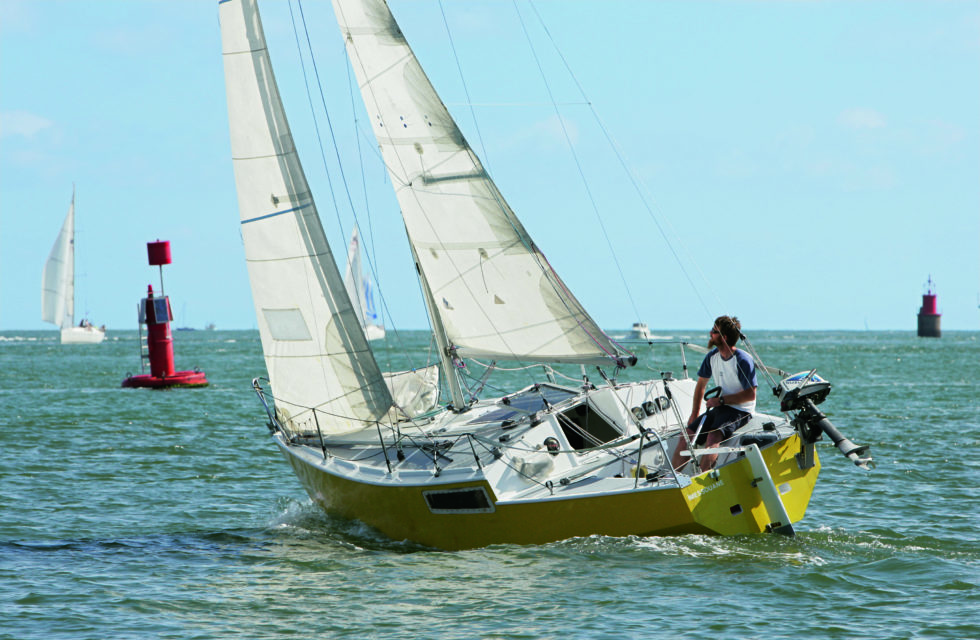
That is the history. But today, plywood is still the preferred material of many small yards that cannot afford to invest in molds to build composite boats. Or that appreciate plywood’s lightness and relatively low carbon footprint. These are some of the arguments put forward by RM Yachts, the La Rochelle-based yard, which, working with the architect Marc Lombard, has done a lot to establish the industrial credibility of plywood construction. They are the only company still building production sailboats of all sizes in plywood. The appeal of wood is not only mechanical — it is tactile, olfactory, almost philosophical. And at RM, this goes hand in hand with clean lines and remarkable natural light levels. So, does plywood have a future as a material for boat building? We cannot rule this out, especially at a time when the chemical industry is racing to develop resins that are compatible with requirements for boats to be deconstructed at the end of their life, so that their materials can be recycled. However, it will never be possible to industrialize plywood construction in the same way as for composite boats. But then again, is this still the main priority for the boat industry?


















